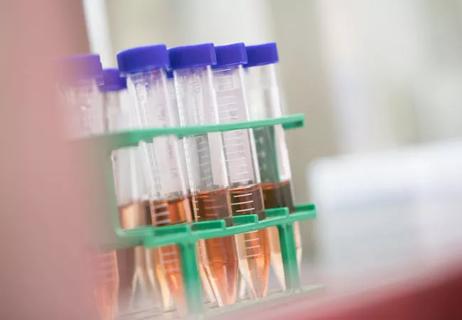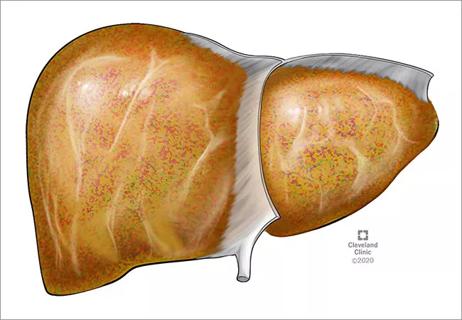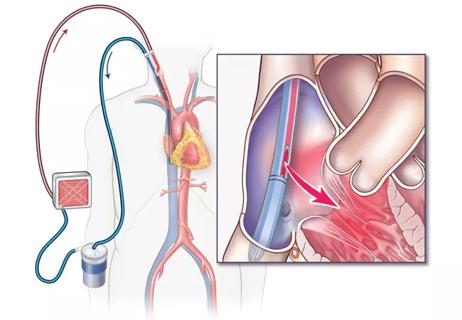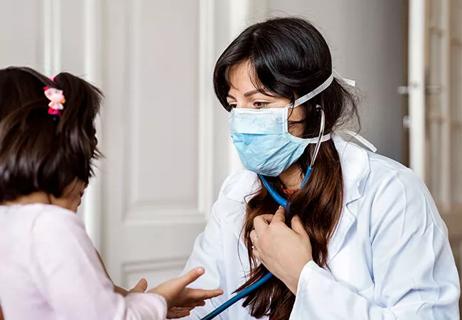Advertisement
Titanium dioxide nanoparticles exaggerate inflammation induced by RSV

Respiratory syncytial virus (RSV) is a leading cause of lower respiratory tract infections in children worldwide. In 2015 alone, an estimated 33 million occurrences of RSV-related acute lower respiratory infection led to 3 million hospitalizations. But RSV doesn’t affect all children in the same way.
Advertisement
Cleveland Clinic is a non-profit academic medical center. Advertising on our site helps support our mission. We do not endorse non-Cleveland Clinic products or services. Policy
While some patients with RSV may be asymptomatic or have only mild disease, other children develop severe symptoms that may require hospitalization, oxygen treatment, and sometimes treatment in pediatric intensive care units. Data indicate that risk factors, such as prematurity and asthma, have been associated with more severe RSV-related illnesses. However, these conditions do not account for all of the variations.
RSV causes infection, inflammation of the airway, and secretions into the airway. Patients present with cough, wheezing and shortness of breath. Some of them need to be admitted for oxygen treatment, and some go to the intensive care unit.
One possible explanation for the variation of the disease course may be environmental, suggests Fabria Rezaee, MD, of the Center for Pediatric Pulmonary Medicine at Cleveland Clinic Children’s. “Epidemiologic data are indicating that for children living in a polluted area or close to a highway, RSV infection can be more severe,” Dr. Rezaee says.
Dr. Rezaee and colleagues have recently published a study in the American Journal of Physiology that analyzes the impact of co-exposure to RSV and particulate matter to gain better insight into the impact of air pollution on the disease course.
Advertisement
“In this study, we sought to investigate the effect of air pollution and RSV infection on airway epithelial cell integrity,” explains Dr. Rezaee. “We exposed epithelial cells to RSV, titanium dioxide nanoparticles (TiO2-NP), or both. We found that the effect of the RSV on the airway epithelial cell integrity and airway inflammation was intensified by TiO2.”
The World Health Organization (WHO) released a report on air pollution and child health in 2018. Its findings suggest that toxic air is associated with more than 1 in 4 deaths in children under the age of 5 years, and that 93% of all children live in environments with air pollution levels above WHO guidelines. In addition, ambient and household air pollution have been shown to contribute to respiratory tract infections, resulting in death for approximately 543,000 children under 5 years old around the world.
Titanium dioxide, thought to be inert, is used as an additive in many commonly used household and personal care products. Household uses include paints and coatings, adhesives, paper, plastics, ceramics and floor coverings. In terms of personal products, titanium dioxide is added to sunscreens as a UV filter, used in pressed and loose powders, lotions and creams, and as a whitening agent in things like toothpaste. When in a lotion, there is a lower risk of exposure to titanium dioxide nanoparticles. However, adverse effects of titanium dioxide have recently been uncovered. When titanium dioxide is inhalable — as it may be in powder form — it is considered a possible carcinogen and may irritate the airway.
The particles come in different sizes: they are coarse, fine or extra fine, and the smaller, nanoparticles can move from the airway into the body, according to Dr. Rezaee. These particles have been found in lungs, heart, liver and even the brain.
“In our study, we incubated bronchial epithelial cells with TiO2-NP or a combination of TiO2-NP and RSV. We then analyzed the structure and function of the epithelial cell barrier and evaluated the viral titer and the role of reactive oxygen species generation. In in vivo experiments, we administered TiO2-NP, RSV or a combination intranasally to murine models,” Dr. Rezaee says.
“In vivo, we found that the addition of TiO2-NP to RSV exacerbated airway inflammation. The titers of the viral infection were higher in these models, with more inflammatory cytokines, and we noted barrier disruptions. While RSV and TiO2 can cause disruption to the airway epithelial cells on their own, when you have both together, the disruption is intensified.”

Exposure to titanium dioxide nanoparticles potentiates epithelial cell susceptibility to RSV infection. 16HBE cells were incubated with RSV and/or titanium dioxide nanoparticles. After 48 hours, fluorescent units visible upon expression of the red fluorescent protein after viral replication were quantitatively analyzed by florescent focused unit assay. Image reused with permission from: Smallcombe CC, Harford TJ, Linfield DT, et al. Titanium dioxide nanoparticles exaggerate respiratory syncytial virus-induced airway barrier dysfunction. Am J Physiol. 2020 Jul. [Epub ahead of print]
Advertisement
Dr. Rezaee hopes this study can be used as groundwork for future studies that look into how these co-exposures affect the tight junction disruption or inflammation, contributing to disease severity.
“Future studies might include a deep-dive into different kinds of treatment for models with co-exposure to RSV and TiO2-NP. We’d also like to identify biomarkers that show inflammation or the various disruptions, and measure those in humans. We’d like to be able to cohort the data so that when a patient presents with RSV, we are able to analyze the air properties in their neighborhoods, which might give clinicians insight into the disease course,” Dr. Rezaee concludes.
Advertisement
Advertisement

Consider offering your patients enrollment in a leading-edge clinical study

Findings underscore need for early screening and close follow-up

Consider offering your patients enrollment in a leading-edge clinical study

Study supports using the direct thrombin inhibitor

Estimating risk remains elusive

The search for predictive factors continues

A conservation with Karen Murray, MD

Identifying mothers at risk of postpartum mental health issues